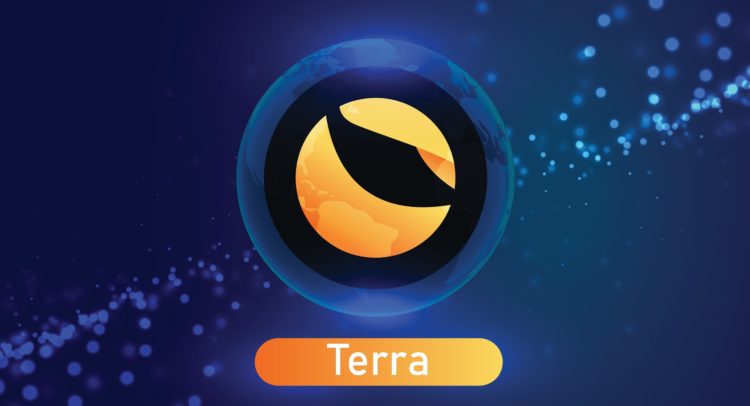Terra (LUNA) recently saw a huge surge in its price, which has mostly faded away. Nonetheless, the rally might have given investors hope of a sustained recovery. While there have been positive developments recently, LUNA remains a highly-risky cryptocurrency that may not be coming back from the dead.
What’s the Idea Behind Terra?
It all started out very promising. The team behind the project, led by Do Kwon, set out to create an ‘algorithmic stable coin’ named LUNA. LUNA could be “burnt” (taken out of circulation) in order to ‘mint’ or receive UST. This process was designed to stabilize it whenever it loses its 1:1 peg to the dollar and vice versa.
For example, if UST hit $0.99, a small amount of LUNA would be burnt, and if it hit $1.01, a small amount of UST would be burnt, and so the price of the UST stablecoin, in theory, should always keep the peg at $1.
It all worked fine, and money kept pouring into the Terra ecosystem via LUNA and UST. The amount of capital was so great that when it peaked, LUNA grew to become the seventh largest cryptocurrency by market cap while enjoying a stream of projects, building on the Terra blockchain with anything from NFTs, DeFi (decentralized finance), games, and protocols.
LUNA’s Big Crash
Early-to-mid May 2022 will be etched in the memory of the entire crypto community forever, as, during that time, the Terra crypto token crashed from $120 to $0.02, a 99.9% correction. More than $60 billion evaporated from the market in a matter of days, retail traders lost all of their life savings, companies crashed one after the other, and the aftermath is felt to this day.
The LUNA crash started a domino effect scenario whereby many DeFi projects that were involved with Terra started to fall and crash one after the other. This led regulators around the world to pursue more regulation and limitations for the entire DeFi market.
Why Did LUNA Crash?
To this day, the full explanation as to why the Terra ecosystem collapse was so quick and so furious remains somewhat unclear. What we do know for sure, though, and as mentioned earlier, is that the biggest stablecoins in the market, USDT and USDC, are pegged by a stable reserve such as the U.S. Dollar. UST took a different approach, and instead of being pegged by a stable reserve asset, its stability is based on algorithms tied to its native cryptocurrency, LUNA.
The biggest problem with “algorithmic” stablecoins is that they work great – until they don’t.
So, when a strong wave of volatility hit the equity and crypto markets in around May 2022, the so-called 1:1 peg started to fall apart, as the price of UST kept going lower and lower, losing most of its value in a short period of time, where traders rushed to burn (sell) their LUNA tokens to try and push the peg back up.
Unfortunately, this didn’t manage to do the trick, as the strong selling pressure kept pushing the price of Luna down. Meanwhile, UST holders saw their supposed stablecoin losing value and, as a result, rushed to sell it, causing the entire Terra ecosystem to crash.
After the crash, a second-generation token launched and was airdropped to holders of the previous LUNA cryptocurrency, which has since been renamed LUNA Classic (LUNC).
Terra’s Latest Developments
A recent governance vote in the LUNC community decided last week to start implementing a token-burning mechanism, which means that every time someone makes a LUNC transaction, a 1.2% tax will be deducted from the amount and will be taken out of circulation so that the cryptocurrency becomes more deflationary over time.
As of now, the community has already burnt over 3.5 billion LUNC tokens and has staked over 550 billion LUNC tokens. This has grabbed the attention of investors, as the daily trading volume went over $3.5 billion, and the LUNC price has rallied significantly in recent weeks.
Obviously, this had a direct effect on the ‘old’ LUNA when it went on a monstrous rally of more than 167% in a single day on September 9. LUNA is up over 60% this month. Meanwhile, bitcoin (BTC-USD) is down just over 1%.

What Goes Up Must Come Down
As the old saying goes, “what goes up must eventually come down.” So, as the speculative wave calms down and the broader equity and crypto markets are getting hit hard with the latest CPI numbers, at its current price, LUNA has dropped a total of 63% from its last Friday peak of $7.66. At the same time, LUNC is down around 50% from its peak, which was the highest its ever been since its initial creation.
Conclusion: What’s Next for Terra?
After the billions of dollars that were lost in the Terra ecosystem collapse, many of them by small retail traders who have lost all of their life savings, now it will be nearly impossible for investors to trust the Luna team and projects. For day traders who look for volatility and traders who are looking to be in and out of the market very quickly, the last few weeks have shown that LUNA and LUNC are excellent for that. However, I personally would prefer to focus on different projects for my long-term portfolio.


















